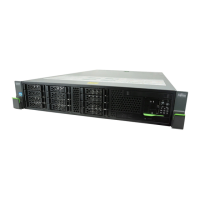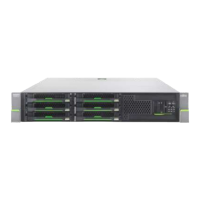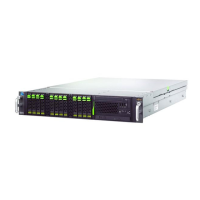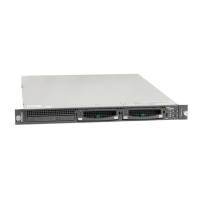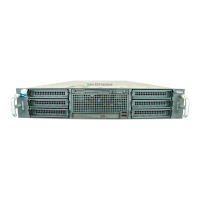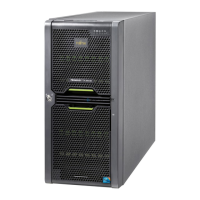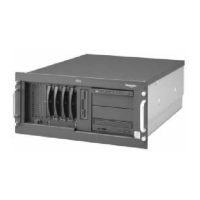6.2 Names and Functions of Parts
Table 6.1 MODE Switch Settings
MODE
switch
POWER
switch
RESET
switch
REQUEST
switch
Operation mode
MANUAL
AUTO
SECURE
Enabled
Enabled
Enabled Enabled
Disabled Disabled Disabled
Disabled Disabled
The OS is automatically booted after initial
diagnostics are completed. The TTY terminal
"break" and keyboard "STOP+A" commands
are disabled while Solaris is operating.
The OS is automatically booted after initial
diagnostics are completed.
The bootup sequence stops at an ok prompt
after initial diagnostics are completed.
Use this mode to enter commands and make
settings from the ok prompt when performing
maintenance on the server unit.
(3) REQUEST switch (push button)
CAUTION
Data Destruction
Pressing the REQUEST switch while the system is running may
cause data to be lost.
The REQUEST switch is for outputting a memory dump when an error has occurred in the system.
Only service engineers should operate the REQUEST switch.
(4) LCD panel
The 16-digit x 2-row LCD panel displays the status of initial diagnostics performed when the power
is turned on.
It also displays error messages when a hardware error has been detected. For details on error
messages that maybe displayed, see "13 Troubleshooting".
A LCD panel error message is cleared by one of the following:
When the problem has been fixed
When the power is next turned on
When the main AC power is cut off.
Some displayed error messages may be cleared when the RESET switch is pressed.
(5) POWER switch (push button)
The POWER switch instructs the system to return the power on and off.
Power on and off of expansion units (such as the Expansion Disk Cabinet) is interlocked with the
powering on and off of the PRIMEPOWER400 Rackmount (10U) Server.
Operation of the POWER switch varies according to the MODE switch and scftool (software
contained in the "Enhanced Support Facility") settings. For details, see "(2) MODE switch" and the
"Enhanced Support Facility User’s Guide."
93

